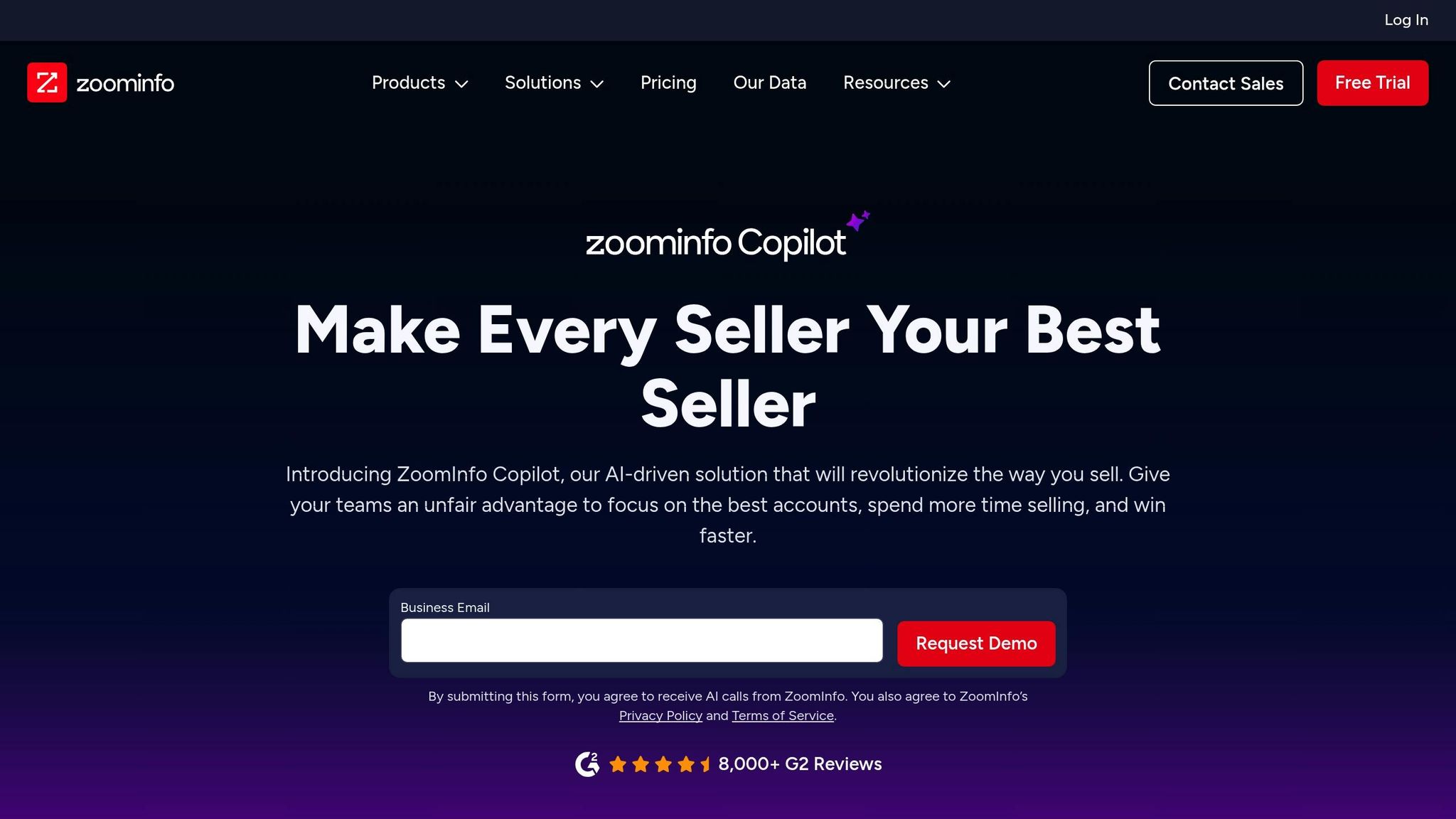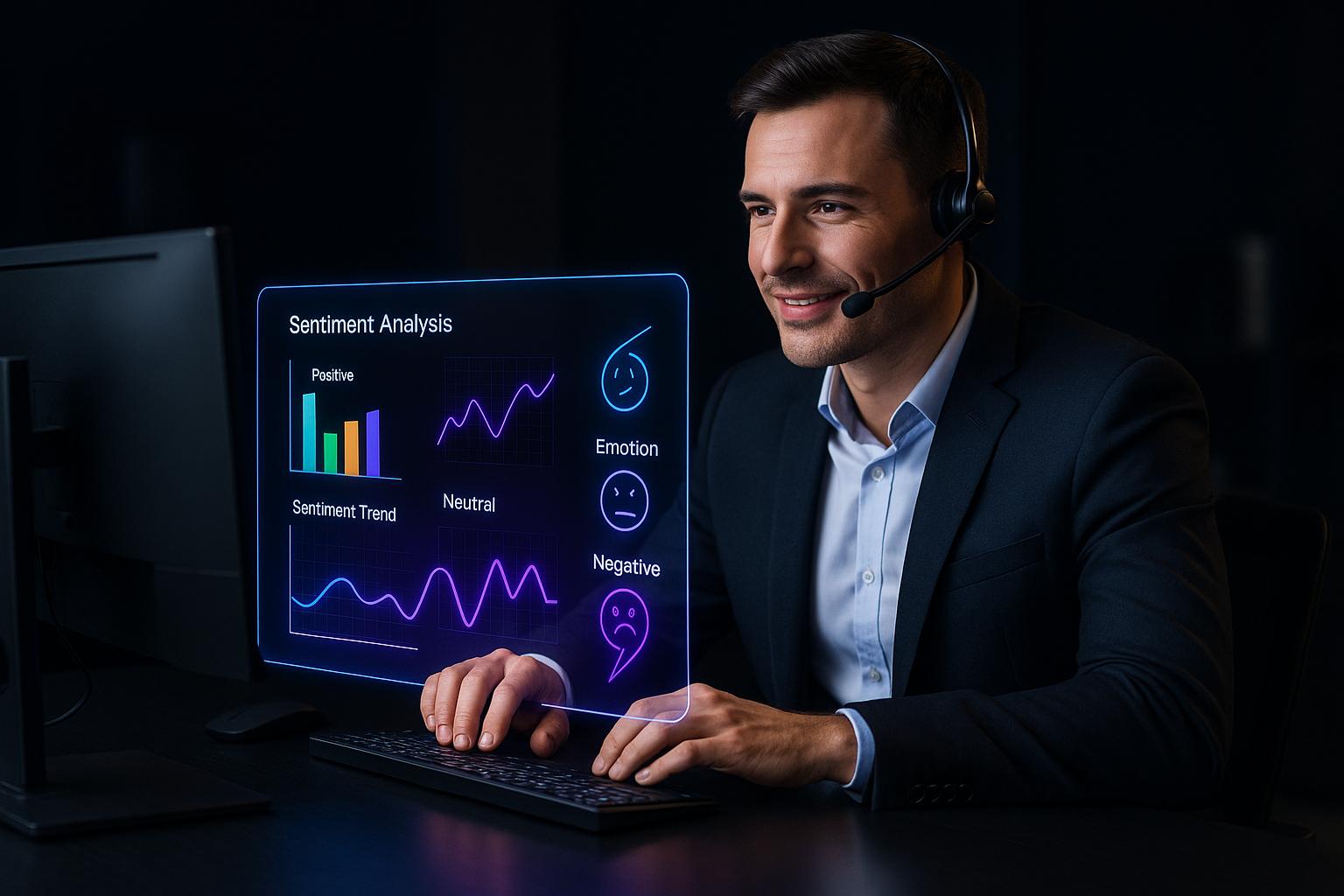AI makes sales outreach smarter by using data to pinpoint the best times to connect with prospects. This approach increases response rates, reduces wasted effort, and helps build stronger customer relationships.
Key Benefits of AI in Outreach Timing:
- Identifies Best Times: AI analyzes past engagement and real-time data to predict when prospects are most likely to respond.
- Dynamic Adjustments: Outreach schedules are updated automatically based on fresh data and activity patterns.
- Personalized Strategies: AI creates custom timing plans for different industries, roles, and time zones.
Quick Overview of AI Timing Features:
- Pattern Recognition: Finds trends in response behavior.
- Real-Time Monitoring: Tracks live engagement signals.
- Seasonal Adjustments: Adapts for holidays, events, and fiscal cycles.
By automating and optimizing timing, AI helps sales teams focus on meaningful interactions, improving efficiency and results.
How AI Processes Data for Timing Decisions
Reviewing Past Engagement
AI examines past engagement data to identify when prospects were most likely to respond. This helps uncover patterns in behavior that can guide future outreach.
Monitoring Real-Time Activity
Advanced AI tools keep an eye on live engagement signals, adjusting outreach timing on the fly to align with how prospects are interacting in the moment.
Predicting Response Timing
By combining historical data with real-time insights, AI predicts the best times to engage prospects. These predictions are updated regularly, helping sales teams connect during the most receptive moments. This approach ensures AI timing tools are set up for success.
Setting Up AI Timing Tools
Selecting AI Software
Choose AI timing tools that align with your sales objectives and fit seamlessly into your workflow. A resource like TopAISalesTools.com can help you find tools that integrate well with your existing tech stack.
When evaluating tools, focus on these key features:
| Feature Category | Requirements | Effect |
|---|---|---|
| Data Analysis | Tracks historical engagement | Helps pinpoint the best contact times |
| Integration | Works with your CRM and email platforms | Ensures smooth data sharing |
| Automation | Adjusts schedules automatically | Keeps timing accurate |
| Reporting | Offers a performance metrics dashboard | Monitors engagement improvements |
Connecting with Current Tools
Review your CRM and outreach platforms to confirm compatibility with the AI timing tool. Integration typically involves:
- API Configuration: Set up connections between platforms.
- Data Mapping: Align data fields for accurate communication.
- Workflow Validation: Test processes to ensure everything runs smoothly.
Additionally, establish clear benchmarks to measure how the tool impacts your outreach performance.
Setting Performance Benchmarks
Start by documenting your current outreach metrics. This will help you measure the impact of AI timing optimization over time:
| Metric | Baseline Measurement | Target Improvement |
|---|---|---|
| Response Rate | Current percentage | Increase by 15-20% |
| Engagement Time | Average time to open/reply | Reduce by 25% |
| Meeting Conversion | Current booking rate | Boost by 30% |
Monitor these metrics weekly to evaluate how well the tool is enhancing your outreach timing. Regular tracking not only helps fine-tune the tool's settings but also highlights its return on investment (ROI).
ZoomInfo Copilot: Perfect Timing for Sales Follow-ups | AI-Powered Prospecting

sbb-itb-3ed3a29
Advanced AI Timing Methods
Building on basic AI timing analysis, advanced techniques fine-tune outreach by using systematic testing and making real-time adjustments.
Testing Different Times
AI refines outreach timing by running systematic tests, such as A/B testing, to compare different time slots and measure their effectiveness.
| Testing Component | Purpose | Impact |
|---|---|---|
| Time Window Analysis | Tests multiple time slots across days | Identifies the best engagement times |
| Audience Segmentation | Groups prospects by industry and role | Tailors timing for specific audiences |
| Response Pattern Testing | Tracks open and reply rates at various times | Pinpoints the best follow-up timing |
These insights guide real-time updates to outreach schedules, improving overall engagement.
Real-Time Schedule Updates
AI keeps track of prospect interactions across channels and adjusts schedules dynamically. This includes factoring in time zones to ensure messages are sent during peak engagement periods.
Key data points monitored include:
- Open and reply rates
- Activity patterns across communication channels
- Time zone variations
Timing for Seasons and Events
AI doesn’t just focus on daily optimization - it also adjusts strategies for seasonal trends and major industry events. By analyzing seasonal patterns and event-specific triggers, AI ensures outreach aligns with audience availability.
| Season/Event Type | AI Adjustment | Expected Outcome |
|---|---|---|
| Holiday Seasons | Sends messages earlier in the day | Accounts for shorter work hours |
| Industry Conferences | Pauses outreach during key event times | Avoids message overlap with events |
| Fiscal Year End | Increases outreach during budget planning | Leverages purchasing opportunities |
Tracking AI Timing Results
After setting up and using advanced methods, keeping a close eye on performance is the final step in fine-tuning AI timing strategies.
Performance Metrics
Keep an eye on key metrics like response rates, open rates, and engagement times to measure how effective your outreach efforts are. Pay attention to email replies, answered calls, message responses, and how often communications are opened or viewed. Tracking these metrics over time helps you see what’s working and where adjustments are needed to improve multichannel engagement.
Data-Driven Adjustments
Once the initial setup is complete, dive deeper into the data for ongoing improvements. AI tools can analyze engagement trends and highlight patterns such as:
- Peak Activity Windows: The times when prospects are most likely to interact.
- Response Patterns: How quickly prospects reply to various types of messages.
- Channel Preferences: Which communication methods perform best at specific times.
Use these insights to fine-tune your outreach schedules continuously for better results.
Measuring Time and Cost Savings
Track how much time you save on manual scheduling, the length of your sales cycle, and the quality of prospect interactions. These metrics can help you calculate the ROI of AI-powered timing tools. By automating scheduling and improving timing, sales teams can focus on high-value tasks, making outreach more efficient overall.
Conclusion: AI Timing Benefits
AI-powered timing tools take the guesswork out of scheduling by relying on data to make decisions. These tools not only improve response rates but also save time by automating the process.
With real-time data analysis, AI pinpoints the best times to engage with prospects, leading to more personalized outreach, smoother workflows, and lower costs. By studying engagement patterns, these tools help sales teams achieve higher conversion rates and speed up sales cycles.
For integrated AI timing solutions, check out TopAISalesTools.com. These tools use historical engagement data, real-time tracking, and predictive analytics to consistently fine-tune outreach timing.
FAQs
How does AI identify the best times for sales outreach and what data does it analyze?
AI-powered tools use advanced algorithms to analyze patterns in customer behavior and engagement. By examining data such as past email open rates, response times, time zones, and even historical sales trends, these tools can pinpoint the most effective times to reach out to prospects.
This data-driven approach helps ensure that outreach efforts are well-timed, leading to higher engagement rates and improved sales outcomes. AI simplifies the process, allowing sales teams to focus on building meaningful connections rather than guessing the best time to connect.
How can AI timing tools enhance CRM and email platform performance?
Integrating AI timing tools with your CRM and email platforms can significantly boost productivity and engagement. These tools analyze data to identify the best times to reach out, ensuring your messages land when recipients are most likely to respond.
By automating tasks like scheduling email sequences and follow-up reminders, AI timing tools help streamline workflows, save time, and maintain consistency across your outreach efforts. This not only enhances efficiency but also improves the overall effectiveness of your communication strategy.
How can sales teams evaluate the success and ROI of AI tools for optimizing outreach timing?
Sales teams can measure the effectiveness and ROI of AI-powered outreach timing tools by focusing on key performance metrics. Start by tracking engagement rates, such as open rates, click-through rates, and response rates, to see if outreach is resonating better with prospects. Additionally, monitor conversion rates to determine if improved timing leads to more closed deals.
To calculate ROI, compare the investment in the AI tool with the revenue generated from increased sales. For a more detailed analysis, assess time savings for your team and the cost reduction in manual processes. These insights can help you determine whether the tool is driving meaningful results for your outreach efforts.


